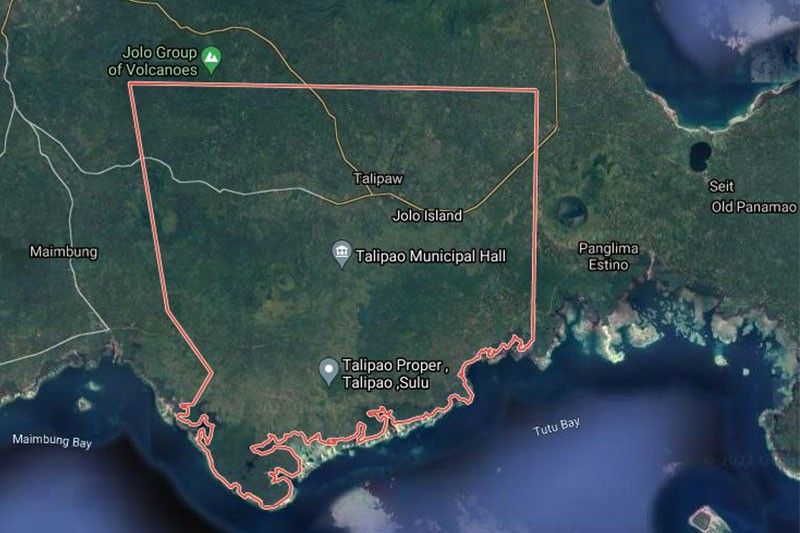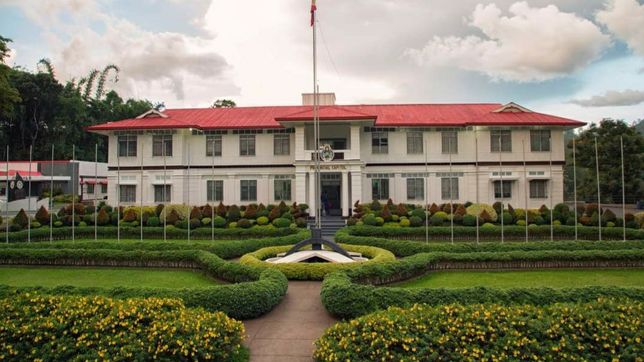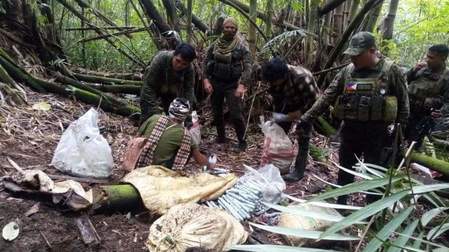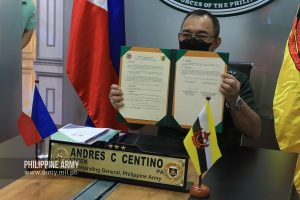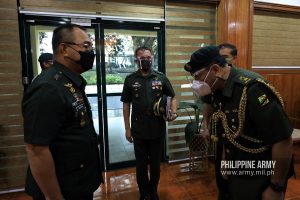Posted to the Strategy Page (Oct 28, 2021): Philippines: Dragging The Dragon
October 28, 2021: The decades of violence from leftist (NPA) rebels and several southern Moslem separatists and Islamic terrorist groups continues to decline. So has violent crime in general, because of the outgoing president’s ruthless attack on corruption and the drug trade. President Duterte is in the last year of his six-year term and that played a part in a recent drop in his voter satisfaction ratings from 79 percent in late 2020 to 62 in mid-2021. Part of the drop was attributed to Duterte considering running for vice-president in the next presidential elections and most voters did not approve of that. As a result, Duterte dropped the vice president angle and announced he would retire and concentrate on keeping his popular reforms going.
There is still a lot of corruption, not just among politicians but also many businesses that depend on it to thrive and often find many powerful and influential Filipinos willing to take a cash token of recognition and respond by performing some seemingly minor tasks. This often worked with members of the security forces and media. This was the approach China was trying to use on key Filipinos to reduce opposition to Chinese territorial claims in the South China Sea. Duterte tried negotiating with China but found that did work and that the Chinese were instead pretending to negotiate while trying to buy the support of enough key Filipinos to induce surrender.
Duterte knew trying to negotiate was dangerous because the Chinese used such negotiations as a distraction, not a solution. While Duterte was negotiating he also cultivated potential allies for the fight against Chinese aggression. He tried bullying the U.S. into providing more support but backed off when he found the usually popular, with Filipino politicians and media, approach rarely succeeded. Duterte now has the U.S. as well as some European nations as allies against China. The Philippines always had a lot of potential allies in the region and the Philippines has been receiving more military aid from them in addition to what they get from the United States. This military and diplomatic support enabled Filipinos to use a form of the Chinese tactics against China. There are now more Filipino patrols, formal government complaints and a general refusal to be bullied by the aggressive Chinese. These tactics have caused the Chinese problems but they have adapted.
Undaunted ChinaCommercial satellite photos revealed that the 200 Chinese paramilitary naval militia trawlers have remained in the South China Sea areas where international law recognizes Filipino ownership. Since March the Chinese claims were being enforced by several hundred Chinese ships that appear to withdraw when challenged but are dispersing momentarily before showing up in a nearby Filipino reef. The satellite photos document the Chinese tactics. Several Filipino reefs in the Spratly Islands were used for this, which appears to be a pre-planned maneuver designed to deceive Filipino patrols and international media scrutiny.
The latest escalation is the use of large (often hundreds) numbers of ocean-going fishing boats. This began with Julian Felipe Reef, which is 324 kilometers west of Palawan, one the Filipino main islands. The reef is part of the Spratly Islands. The nearest undisputed Chinese territory is 1,148 kilometers away. China is using bogus and illegal claims on other South China Sea islands or reefs to justify its occupation of Julian Felipe Reef. In this case there is another problem. Julian Felipe Reef was not legally “land” that could be claimed until about five years ago. As happens often in the South China Sea, reefs grow and shrink because of the natural movement of sand. Parts of Julian Felipe Reef had long emerged from the water only during low tide. According to international law, that did not qualify as “land”. There are suspicions that China covertly did some dredging at Julian Felipe Reef to get the permanent sand to show. This is unlikely because commercial satellite coverage of the South China Sea has been nearly constant for over a decade.
The use of commercial satellite coverage, often on a sustained basis along with and the growing number of visits by Filipino air force and coast guard patrols plus fishermen operating there has provided an accurate record of increased Chinese activity. The photos show Chinese fishing boats and naval militia (fishing boats not currently equipped for fishing) showing up at Julian Felipe Reef in November 2020. By mid-March 2021 there were over 200 Chinese naval militia boats inside the reef. Most of them were lashed together in groups of five to twenty boats that formed a pattern preventing legitimate fishing boats from operating inside the reef. Most fishing boats in the South China Sea are trawler type vessels. These boats deploy their nets and then move through an area containing a lot of fish and haul their catch on board and into a refrigerated compartment. Many of the Chinese militia boats are formally called "freezer trawlers." These ships are up to 100 meters (320 feet) long and have facilities onboard to store hundreds of tons of frozen fish. These ships normally stay at sea months at a time and have crews of 14-30.
The number of Chinese trawlers has expanded enormously since 1985 when there were only 13. Now there are over 2,400 of them operating worldwide. China helped with this expansion by subsidizing ocean-going fishing boats. Those subsidies have since been withdrawn but meanwhile, the number of larger freezer trawlers has grown and these are meant for use in far distant waters.
China claimed all those Chinese fishing boats were taking shelter from bad weather. This is often the case with reefs in the South China Sea, but there was no correlation between the presence of Chinese boats inside the reef and the actual weather in the area. The Chinese claims don’t stand up to scrutiny. With so many cellphone videos and high-res images from aircraft and warships available, all China can do is keep lying and do it aggressively and with assurance that no one will do much about it.
The Chinese naval militia has been a major factor in Chinese intimidation operations in the South China Sea. This militia has been around since the 1950s but wasn’t used this aggressively until recently. For example, during the first three months of 2019 China deployed 900 navy, coast guard and naval militia ships around Pagasa Island to block access to fishing areas that Filipinos have been using for centuries. International law makes it clear that these are Filipino waters but the Chinese naval effort, and base constructed on Pagasa, challenge Filipino ownership blatantly and often physically.
Since 2015 China has hired several hundred Chinese fishing boats and their crews as a part-time naval militia to conduct a blockade of tiny islands in the South China Sea that the Philippines physically occupies, hoping to force the Filipinos to evacuate these outposts so China can take possession. The Chinese fishermen don’t mind the militia work, seeing it as something of a paid vacation with overtones of patriotic service to the state. The militia boats are not true volunteers. When the government “requests” that a Chinese fishing boat work for the militia, the boat owner complies. Sometimes boat owners grumble when they are called up during a prime fishing season, but refusal is not an option and they make the best of it.
The Philippines appears to get most of the unwanted Chinese attention in the South China Sea because the Philippines has the most to lose. The 7,600 islands that comprise the Philippines amount to only 300,000 square kilometers (120,000 square miles) of land area. Compare this to China, with 9.6 million square kilometers of land. According to international law, the Philippines controls (via its EEZ or Exclusive Economic Zone) water areas covering 2.26 million square kilometers. By the same standards the Chinese EEZ waters comprises 877,000 square kilometers.
The Philippines is also the weakest (in military terms) nation China is seizing territory from and their mutual defense treaty with the United States is not always adequate to deal with the Chinese tactics. Moreover, the American government priorities can change radically every four years because of presidential elections. The current U.S. president is seen as less steadfast in dealing with China. So far that has not been the case, but the new American government has only been in power since January 2021.
October 15, 2021: In the south (Zamboanga City) police arrested Adzrimar Sali Ammat, a wanted Abu Sayyaf kidnapper who was involved in the 2016 execution of two Canadians who had been kidnapped for ransom but no money was offered. Ammat often served as the negotiator for the Abu Sayyaf kidnapping gang he belonged to and had set up a safe house in Zamboanga City that was two kilometers from a military base. Someone in the area recognized him and reported that to the police. The police delayed announcing the arrest for three days and would not say why. The delay was apparently caused by Ammat trying to negotiate lighter punishment for himself by giving the police useful information on other active Abu Sayyaf members.
October 7, 2021: In the south (Davao del Norte province) a suspected NPA rebel was killed after he encountered soldiers and refused to surrender. The troops were responding to complaints that groups of gunmen were seeking to extort cash from businesses, often claiming to represent the NPA. But more and more of these extortion operations drop the NPA “revolutionary taxes” angle because few potential victims believe that line anymore. In this province there are more NPA men surrendering, mainly because of hunger and despair, than continuing with their half-century long fight for a communist government. Many of the remaining NPA gunmen are teenagers between 14 and 17 years old. The NPA has made itself even more unpopular by recruiting teenagers and ignoring parental disapproval. Some older NPA men turn to banditry, but usually do so as part of a gang.
September 28, 2021: In the north (Mountain province) an army patrol encountered about ten NPA gunmen that local villagers had reported were operating in the area. The NPA men opened fire on the troops and after a 30-minute gun battle the NPA withdrew, leaving behind two dead and taking any other casualties with them. The army suffered no casualties. The two dead men were well-known locals and some family members came and made positive identification.
https://www.strategypage.com/qnd/phillip/20211028.aspx










































